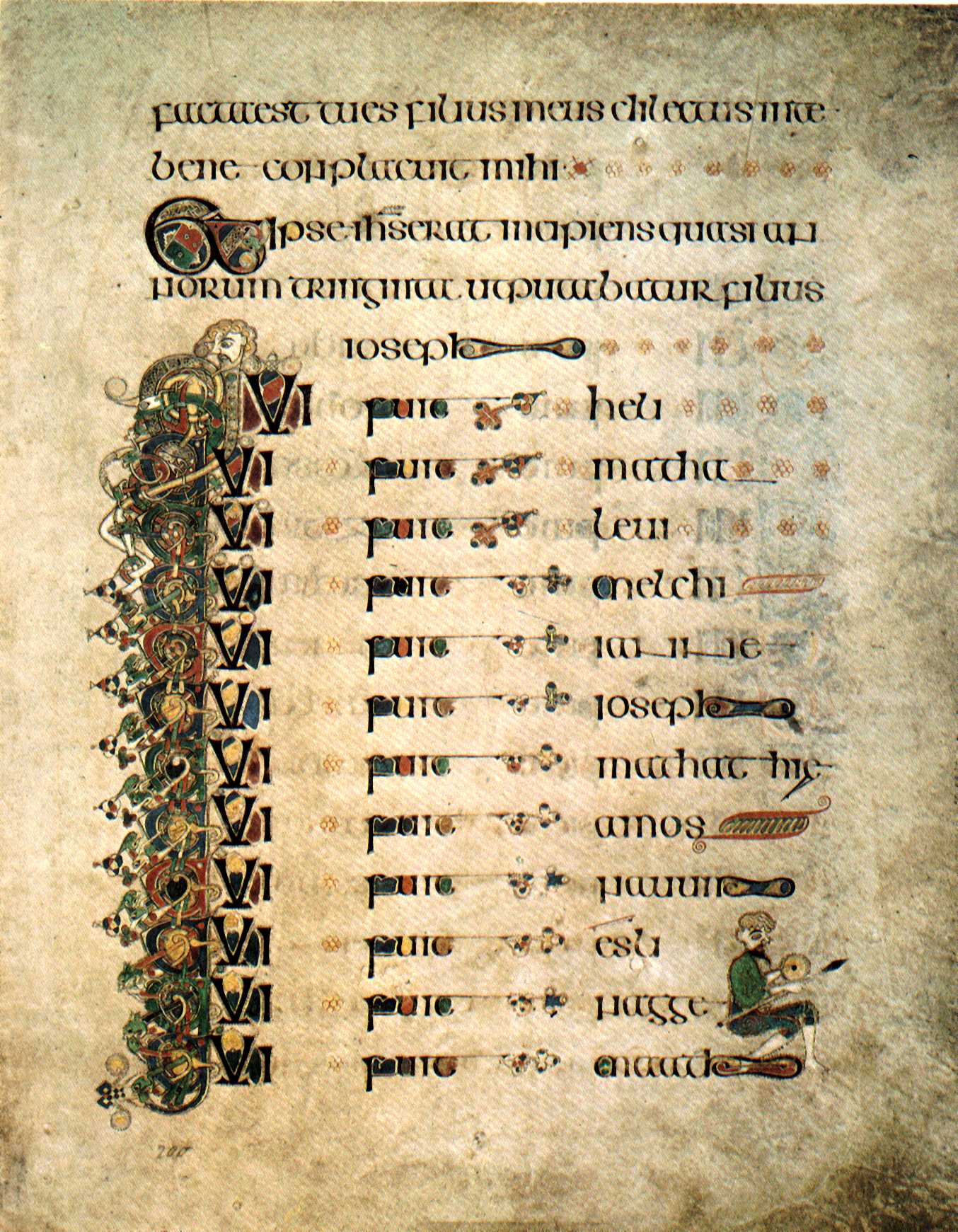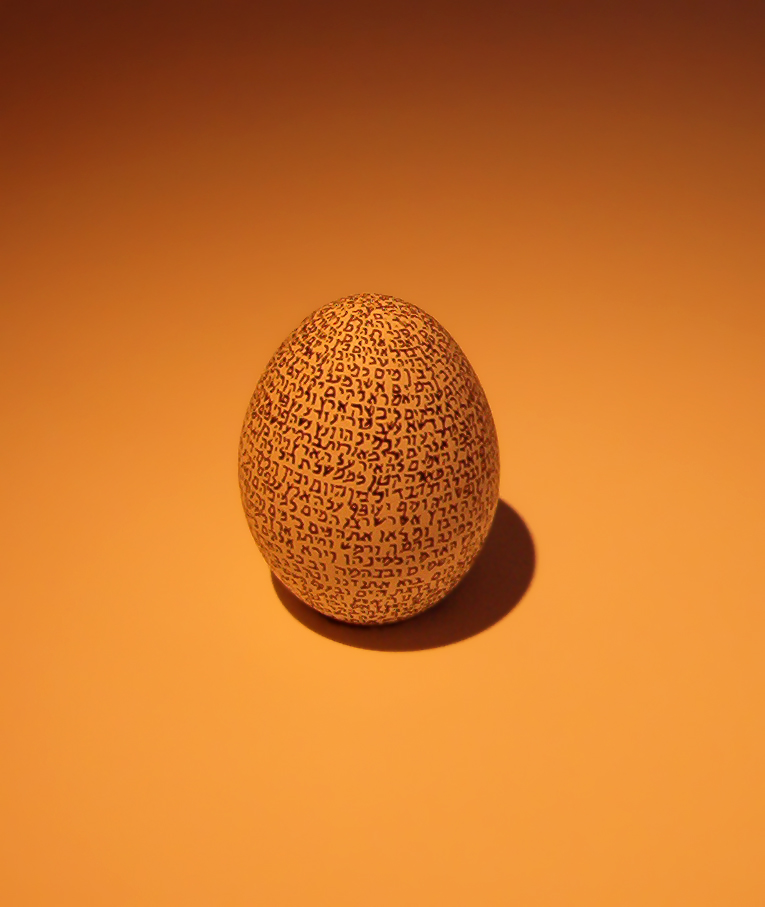|
Kenan
Kenan (also spelled Qenan, Kaynan, Caynam or Cainan) (; ; ) is an Antediluvian patriarch first mentioned in the Book of Genesis in the Hebrew Bible. The '' Sefer ha-Yashar'' describes Cainan, the possessor of great astrological wisdom, which had been inscribed on tables of stone, as the son of Seth; i.e., the antediluvian Kenan grandson of Seth according to the Bible. He is revered within Islamic tradition as well. In scriptures According to Genesis 5:9–14, Kenan was a son of Enosh and a grandson of Seth. Born when Enosh was 90 years old (3679 BC), Kenan fathered Mahalalel when he was 70 years old. Other sons and daughters were born to Kenan before he died at 910 years of age (when Noah was aged 179 as per the Masoretic chronology). According to the Book of Jubilees, Kenan's mother was Noam, wife and sister of Enosh; and Kenan's wife, Mualeleth, was his sister. He is also mentioned in the Genealogy of Jesus in Luke 3:36–37. Family tree The following family t ... [...More Info...] [...Related Items...] OR: [Wikipedia] [Google] [Baidu] |
Enos (biblical Figure)
Enos or Enosh ( ''ʾĔnōš''; "mortal man"; ; ''Enṓs''; Ge'ez: ሄኖስ ''Henos'') is a figure in the Book of Genesis in the Hebrew Bible. He is described as the first son of Seth who figures in the Generations of Adam, and is also referred to within the genealogies of 1 Chronicles. According to Christianity, he is part of the genealogy of Jesus as mentioned in . Enos is also mentioned in Islam in the various collections of qisas al-anbiya, tales of the pre-Islamic prophets, which honor him in an identical manner. Furthermore, early Islamic historians like Ibn Ishaq and Ibn Hisham always included his name in the genealogy of the Islamic prophet Muhammad, (Arabic: ''’Anūsh'' أَنُوش or: ''Yānish'' يَانِش). In the Hebrew Bible According to the Masoretic Text, Masoretic Genesis, Seth was 105 years old when Enos was born (but the Septuagint version gives 205 years), and Seth had further sons and daughters. Enos was the grandson of Adam and Eve (; ). Accor ... [...More Info...] [...Related Items...] OR: [Wikipedia] [Google] [Baidu] |
Mahalalel
Mahalalel (, ) is an Antediluvian patriarch named in the Hebrew Bible. He is mentioned in the Sethite genealogy as the grandfather of Enoch and subsequently the ancestor of Noah. Etymology The meaning of the name could be translated as "the shining one of El." The King James Version spells his name Mahalaleel in the Old Testament and Maleleel in the New Testament. Biblical narrative Mahalalel was born when his father Kenan (Adam's great-grandson through Seth) was 70 years old. He was one of many children of Kenan.Genesis 5:12-13 . When he wa ... [...More Info...] [...Related Items...] OR: [Wikipedia] [Google] [Baidu] |
Genealogy Of Jesus
The New Testament provides two accounts of the genealogy of Jesus, one in the Gospel of Matthew and another in the Gospel of Luke. Matthew starts with Abraham and works forwards, while Luke works back in time from Jesus to Adam. The lists of names are identical between Abraham and David David (; , "beloved one") was a king of ancient Israel and Judah and the third king of the United Monarchy, according to the Hebrew Bible and Old Testament. The Tel Dan stele, an Aramaic-inscribed stone erected by a king of Aram-Dam ... (whose royal ancestry affirms Jesus' Messianic title Son of David), but differ radically from that point. Matthew has twenty-seven generations from David to Saint Joseph, Joseph, whereas Luke has forty-two, with almost no overlap between them or with other known genealogies. They also disagree on who Joseph's father was: Matthew says he was List of minor New Testament figures#Jacob, Jacob, while Luke says he was Heli (biblical figure), Heli. ... [...More Info...] [...Related Items...] OR: [Wikipedia] [Google] [Baidu] |
Bereshit (parashah)
Bereshit, Bereishit, Bereshis, Bereishis, or B'reshith (—Hebrew language, Hebrew for "in beginning" or "In the beginning (phrase), in the beginning," the incipit, first word in the parashah) is the first weekly Torah portion (, ''parashah'') in the annual Judaism, Jewish cycle of Torah reading. The parashah consists of Book of Genesis, Genesis 1:1–6:8. In the parashah, God in Judaism, God creates the heavens, the world, Adam and Eve, and Sabbath. A Serpents in the Bible#Eden, serpent convinces Eve, who then invites Adam, to eat the forbidden fruit, fruit of the tree of the knowledge of good and evil, which God had forbidden to them. God curses the ground for their sake and expels them from the Garden of Eden. One of their sons, Cain and Abel, Cain, becomes the first murderer, killing his brother Abel out of jealousy. Adam and Eve have other children, whose descendants populate the Earth. Each generation becomes more and more degenerate until God decides to Genesis flood narra ... [...More Info...] [...Related Items...] OR: [Wikipedia] [Google] [Baidu] |
Seth
Seth, in the Abrahamic religions, was the third son of Adam and Eve. The Hebrew Bible names two of his siblings (although it also states that he had others): his brothers Cain and Abel. According to , Seth was born after Abel's murder by Cain, and Eve believed that God had appointed him as a replacement for Abel. Genesis According to the Book of Genesis, Seth was born when Adam was 130 years old (according to the Masoretic Text), or 230 years old (according to the Septuagint), "a son in his likeness and image". The genealogy repeated at . states that Adam fathered "sons and daughters" before his death, aged 930 years. According to Genesis, Seth died at the age of 912 (that is, 14 years before Noah's birth). Jewish tradition Seth figures in the biblical texts of the ''Life of Adam and Eve'' (the ''Apocalypse of Moses''). It recounts the lives of Adam and Eve from after their expulsion from the Garden of Eden to their deaths. While the surviving versions were composed from the e ... [...More Info...] [...Related Items...] OR: [Wikipedia] [Google] [Baidu] |
Lamech (father Of Noah)
Lamech (; ''Lemeḵ'', in pausa ''Lāmeḵ''; ''Lámekh'') was a patriarch in the genealogies of Adam in the Book of Genesis. He is part of the genealogy of Jesus in Luke 3:36. Lamech (Arabic: لامك, romanized: ''Lāmik'') is also mentioned in Islam in the various collections of tales of the prophets who preceded Muhammad, which mentions him in an identical manner. Bible narrative Biblical genealogy Lamech is the eighth-generation descendant of Adam (), the son of Methuselah, and the father of Noah (), in the genealogy of Seth in Genesis 5. In Genesis 5:12-25, Lamech was a son of Methuselah, who was a grandson of Jared, who was a grandson of Kenan descended from Adam. Genesis 5:28–31 records that Lamech was 182 (according to the Masoretic Text; 188 according to the Septuagint) years old at the birth of Noah and lived for another 595 years, attaining an age at death of 777 years, five years before the Flood in the Masoretic chronology. With such numbers in ... [...More Info...] [...Related Items...] OR: [Wikipedia] [Google] [Baidu] |
Hebrew Bible
The Hebrew Bible or Tanakh (;"Tanach" . '' Random House Webster's Unabridged Dictionary''. ; ; or ), also known in Hebrew as (; ), is the canonical collection of scriptures, comprising the Torah (the five Books of Moses), the Nevi'im (the Books of the Prophets), and the [...More Info...] [...Related Items...] OR: [Wikipedia] [Google] [Baidu] |
Book Of Genesis People
A book is a structured presentation of recorded information, primarily verbal and graphical, through a medium. Originally physical, electronic books and audiobooks are now existent. Physical books are objects that contain printed material, mostly of writing and images. Modern books are typically composed of many pages bound together and protected by a cover, what is known as the ''codex'' format; older formats include the scroll and the tablet. As a conceptual object, a ''book'' often refers to a written work of substantial length by one or more authors, which may also be distributed digitally as an electronic book (ebook). These kinds of works can be broadly classified into fiction (containing invented content, often narratives) and non-fiction (containing content intended as factual truth). But a physical book may not contain a written work: for example, it may contain ''only'' drawings, engravings, photographs, sheet music, puzzles, or removable content like paper d ... [...More Info...] [...Related Items...] OR: [Wikipedia] [Google] [Baidu] |
Islam
Islam is an Abrahamic religions, Abrahamic monotheistic religion based on the Quran, and the teachings of Muhammad. Adherents of Islam are called Muslims, who are estimated to number Islam by country, 2 billion worldwide and are the world's Major religious groups, second-largest religious population after Christians. Muslims believe that Islam is the complete and universal version of a Fitra, primordial faith that was revealed many times through earlier Prophets and messengers in Islam, prophets and messengers, including Adam in Islam, Adam, Noah in Islam, Noah, Abraham in Islam, Abraham, Moses in Islam, Moses, and Jesus in Islam, Jesus. Muslims consider the Quran to be the verbatim word of God in Islam, God and the unaltered, final revelation. Alongside the Quran, Muslims also believe in previous Islamic holy books, revelations, such as the Torah in Islam, Tawrat (the Torah), the Zabur (Psalms), and the Gospel in Islam, Injil (Gospel). They believe that Muhammad in Islam ... [...More Info...] [...Related Items...] OR: [Wikipedia] [Google] [Baidu] |
Family Tree
A family tree, also called a genealogy or a pedigree chart, is a chart representing family relationships in a conventional tree structure. More detailed family trees, used in medicine and social work, are known as genograms. Representations of family history Genealogical data can be represented in several formats, for example, as a pedigree chart, pedigree or . Family trees are often presented with the oldest generations at the top of the tree and the younger generations at the bottom. An ancestry chart, which is a tree showing the ancestors of an individual and not all members of a family, will more closely resemble a tree in shape, being wider at the top than at the bottom. In some ancestry charts, an individual appears on the left and his or her ancestors appear to the right. Conversely, a descendant chart, which depicts all the descendants of an individual, will be narrowest at the top. Beyond these formats, some family trees might include all members of a particular surna ... [...More Info...] [...Related Items...] OR: [Wikipedia] [Google] [Baidu] |




